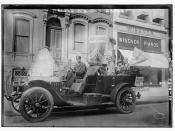Richard Hoffman, the Executive Vice President, could not have been more right when he acknowledged that Peter Browning had a difficult job in front of him. It was Peter's job to revitalize a mature business in the face of serious competitive threats, but without discouraging the loyalty and morale of a family style culture. Under Continental's management, Peter Browning was faced with several issues.
First and foremost, some managers as well as most employees of White Cap's were resistant to change. Many of the employees were older and had been with the company for a long time. Additionally, employees had a tendency to bring both their friends and family on board. They had not only become accustomed to a culture of little change, but also one that consisted of years worth of rituals, ceremonies and traditions by the White family. Employees came to expect job security, generous benefits, and a management structure that was built on personal relationships rather than job performance.
Because of these expectations, employees were extremely loyal. Due to this loyalty, employees did not push for a union. They felt they were treated fairly and that pushing to unionize would sever connections between the employees and management. Rapid change by Peter Browning could run the risk of an employee uproar.
Next, Browning was asked by Continental to reduce salary and administrative costs. Continental's management saw these high costs as a weakness. Simultaneously, he was supposed to communicate a sense of urgency of the absolute collapse of White Cap if things did not change quickly. At the same time, Browning was to do this without disrupting the marketplace image of White Cap as well as without weakening its employee loyalty. These changes needed to be accomplished from beneath the ranks of Art Lawson, the successor...
![[Portrait of Juan Tizol(?) and Lawrence Brown(?), Aquarium, New York, N.Y., ca. Nov. 1946] (LOC)](https://s.writework.com/uploads/7/77189/portrait-juan-tizol-and-lawrence-brown-aquarium-new-york-n-thumb.jpg)

